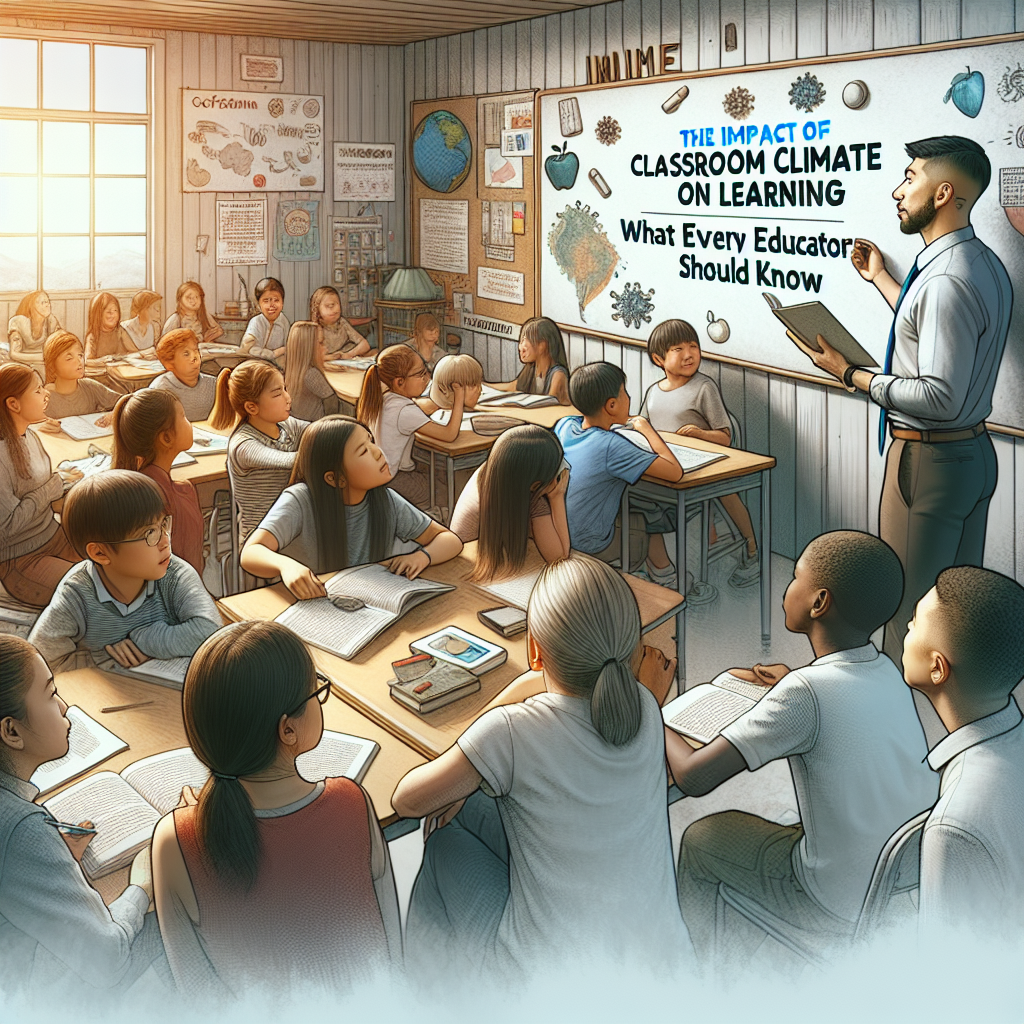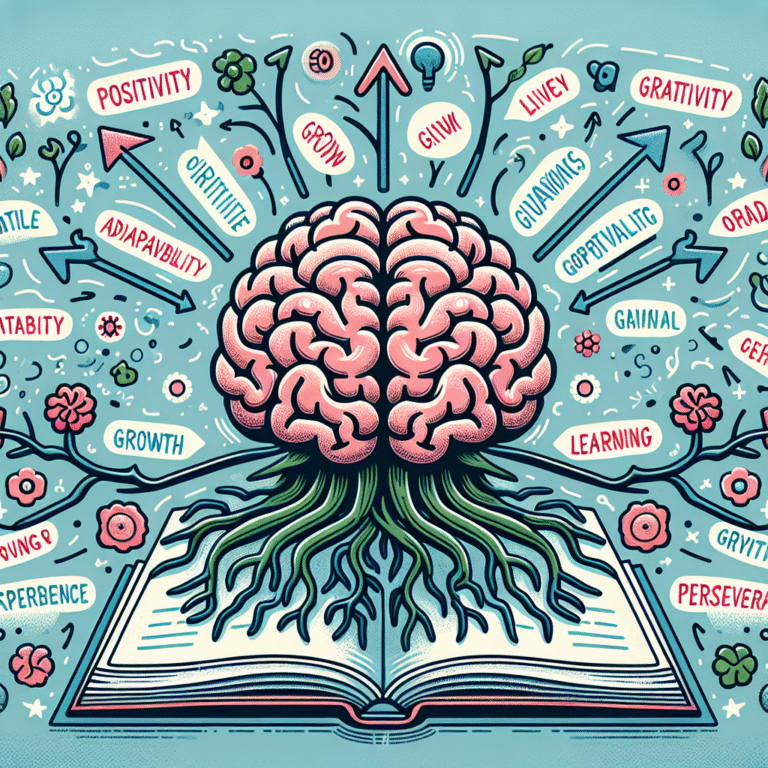
Introduction
Imagine stepping into a classroom where students flourish, ideas spark, and learning is not just a task but a transformative experience. The classroom environment plays a pivotal role in shaping student outcomes, yet many educators overlook this fundamental element.
The impact of classroom climate on learning: What every educator should know is not just a catchphrase; it’s a vital principle guiding effective teaching and learning. A positive classroom climate enhances motivation, improves engagement, and ultimately elevates academic achievement. In this exploration, we’ll delve into how educators can cultivate a stimulating learning atmosphere, backed by research, real-life examples, and actionable strategies.
Understanding Classroom Climate
Defining Classroom Climate
Classroom climate encompasses the emotional and social atmosphere within a classroom. It is influenced by various factors including teacher-student relationships, classroom management, and the overall physical and psychological safety of the environment.
- Emotional climate relates to how feelings are expressed and managed among students and teachers.
- Social climate focuses on the interactions and relationships formed within the classroom community.
A positive classroom climate leads to optimal learning conditions, while a negative one can stifle student potential.
The Importance of Classroom Climate
The impact of classroom climate on learning is profound. Research has shown that students thrive in environments that promote respect, support, and collaboration. According to a study published in the Journal of Educational Psychology, classrooms with a positive climate saw a 20% increase in student engagement and motivation (Smith & Jones, 2021).
Key Components of Classroom Climate
1. Teacher-Student Relationships
Positive, trusting relationships between teachers and students form the backbone of a healthy classroom climate. Students are more likely to participate, take risks, and express themselves when they feel supported and respected.
Case Study: The Power of Trust
At Lincoln High School, a dedicated science teacher, Mr. Adams, implemented weekly check-ins with his students. By fostering open communication, he transformed his classroom atmosphere. Results indicated a significant increase in student confidence and participation rates.
2. Physical Environment
A classroom that is organized, vibrant, and welcoming can enhance student learning. Elements like seating arrangements, lighting, and decor can influence mood and engagement.
Analysis of Classroom Layouts
A study comparing traditional rows versus collaborative group seating arrangements found that classrooms designed for collaboration led to 30% higher student interaction and engagement (Brown & Lee, 2020).
3. Social Dynamics
Peer relationships play a crucial role in shaping the classroom climate. Inclusive practices that celebrate diversity build connections among students.
Case Study: Cooperative Learning Initiative
At Evergreen Middle School, the introduction of a cooperative learning model resulted in a 40% decrease in bullying incidents and an increase in student satisfaction surveys. Educators observed that fostering collaboration amongst diverse groups promoted empathy and understanding.
4. Classroom Management
Effective classroom management techniques can greatly influence classroom climate. Strategies that focus on positive reinforcement rather than punitive measures lead to a more conducive learning environment.
Case Study: Positive Behavior Support Systems
In Oakview Elementary, the implementation of a Positive Behavior Support (PBS) system resulted in a 50% reduction in disruptive behaviors and a notable increase in academic performance, underscoring the importance of a structured yet nurturing approach to classroom management.
Strategies to Enhance Classroom Climate
1. Create a Safe Environment
Ensuring students feel safe—emotionally and physically—is crucial. Strategies include setting ground rules, prioritizing respectful communication, and addressing bullying issues swiftly.
2. Encourage Student Voice
Involving students in decision-making gives them a sense of ownership and responsibility. This not only boosts confidence but positively contributes to the classroom climate.
3. Foster Relationships
Building connections takes time. Teachers can dedicate moments in class where students share interests, challenges, and successes, deepening mutual respect.
4. Incorporate Inclusive Practices
Celebrating diversity fosters an atmosphere of belonging. Incorporate different cultural perspectives and practices into lessons and classroom activities.
The Role of Educators in Shaping Climate
Teacher’s Mindset
Educators’ attitudes toward their students greatly impact classroom climate. A growth mindset—believing that all students can learn and improve—creates an atmosphere of encouragement and resilience.
Professional Development
Ongoing training in social-emotional learning (SEL) equips educators with skills to create supportive environments. Regular workshops, webinars, and collaborative sessions can enhance these skills.
Collaboration
Educators sharing insights and strategies can lead to a unified approach to improving classroom climates across a school.
Assessment of Classroom Climate
Regular assessments of classroom climate through surveys or feedback tools help educators gauge the effectiveness of their strategies. Data-driven insights can lead to targeted improvements.
Sample Classroom Climate Assessment Survey
| Question | Strongly Disagree | Disagree | Neutral | Agree | Strongly Agree |
|---|---|---|---|---|---|
| I feel safe sharing my ideas in class. | |||||
| My teacher respects my opinions. | |||||
| I can easily collaborate with my classmates. | |||||
| There is no bullying in my classroom. |
Conclusion
In conclusion, the impact of classroom climate on learning is both significant and multifaceted. By prioritizing relationships, fostering inclusivity, and managing the environment effectively, educators can create spaces where students thrive.
What every educator should know is that the classroom climate is not just an abstract concept but a tangible aspect that can dramatically influence student success. Implementing strategies that enhance classroom climate ultimately leads to engaged, motivated learners who are prepared to face future challenges.
FAQs
1. What is classroom climate?
Classroom climate refers to the emotional and social atmosphere of the classroom, influenced by teacher-student relationships, management practices, and physical environments.
2. How does classroom climate affect learning?
A positive classroom climate enhances student motivation, engagement, and academic performance, while a negative climate can hinder learning and lead to disengagement.
3. What strategies can enhance classroom climate?
Creating a safe environment, encouraging student voice, fostering relationships, and incorporating inclusive practices are all effective strategies.
4. Why is teacher-student relationship important?
Positive teacher-student relationships promote trust and engagement, making students feel valued and respected, which is essential for effective learning.
5. How can educators assess classroom climate?
Educators can use surveys, feedback tools, and observations to assess classroom climate, allowing for targeted improvements.
By understanding and leveraging the impact of classroom climate on learning, every educator can become an architect of a thriving educational environment where students can realize their fullest potential.















